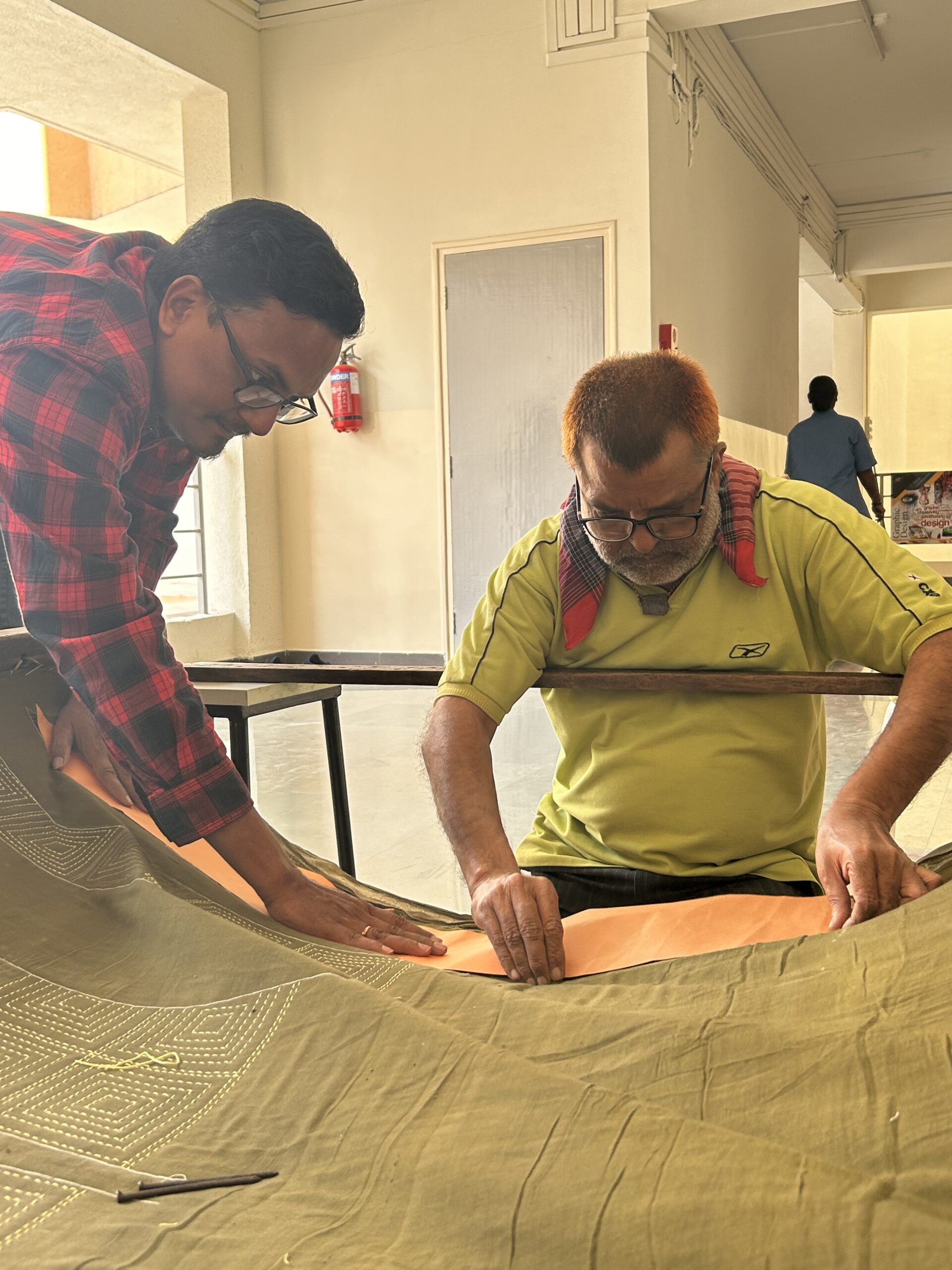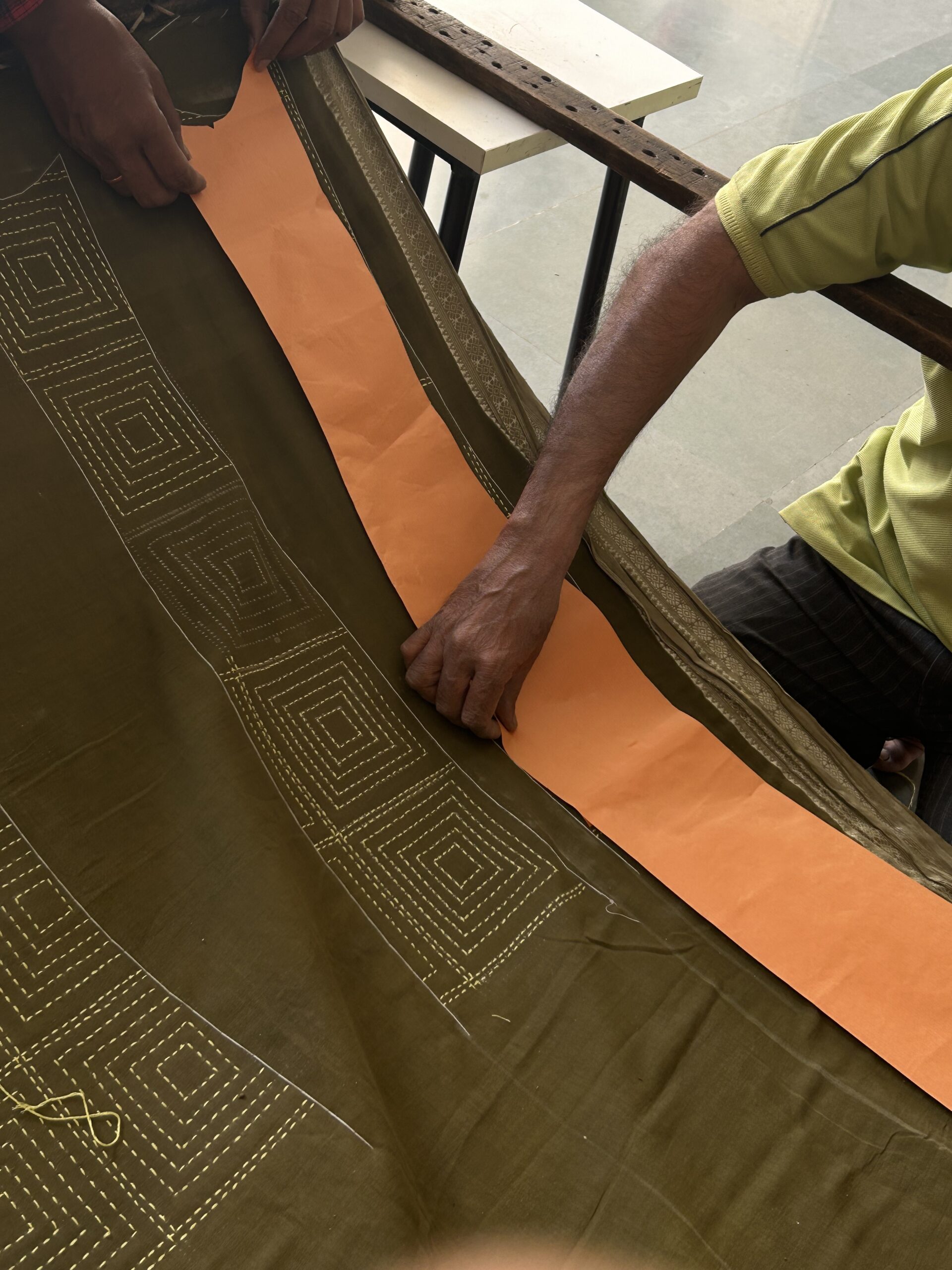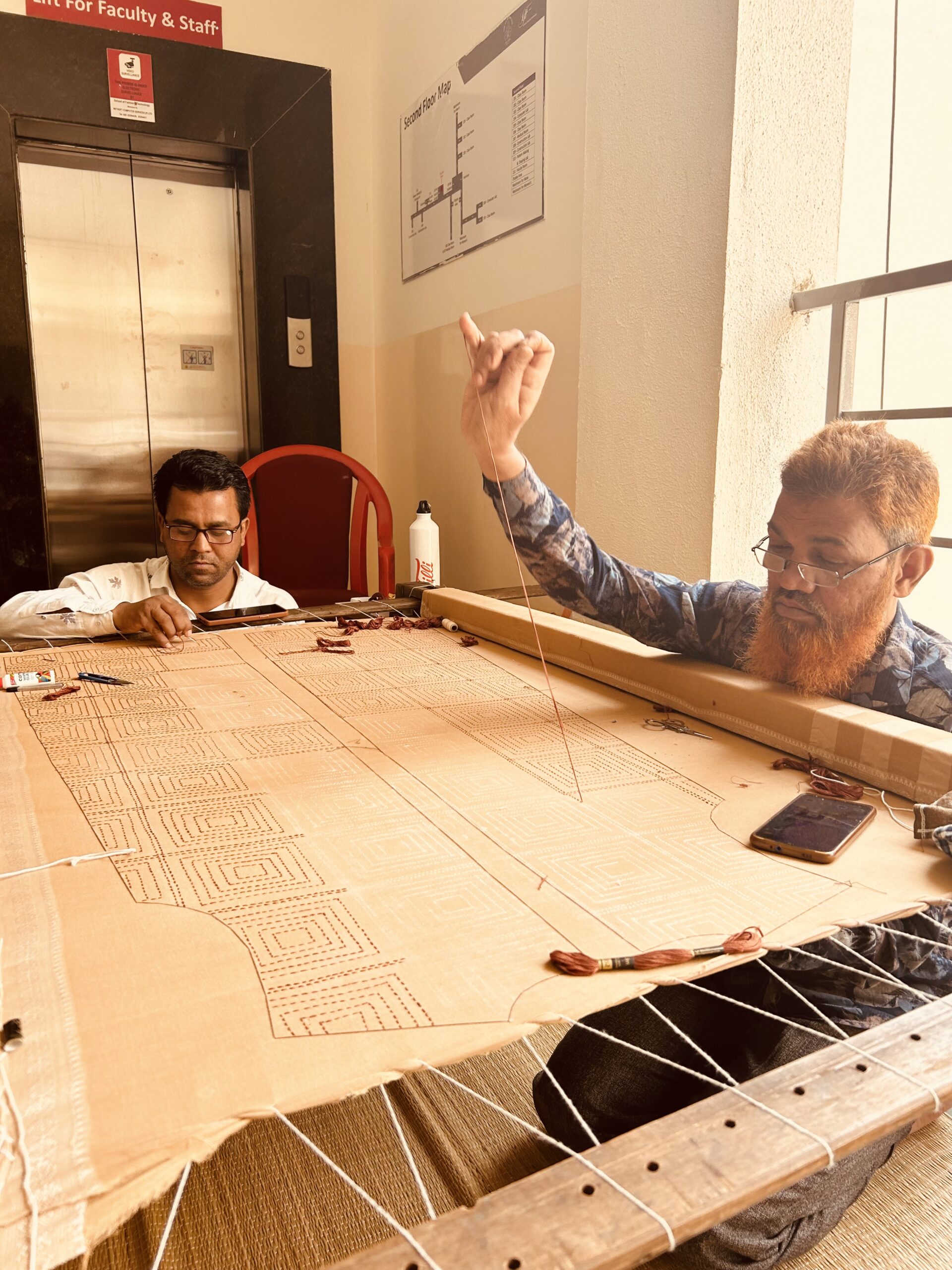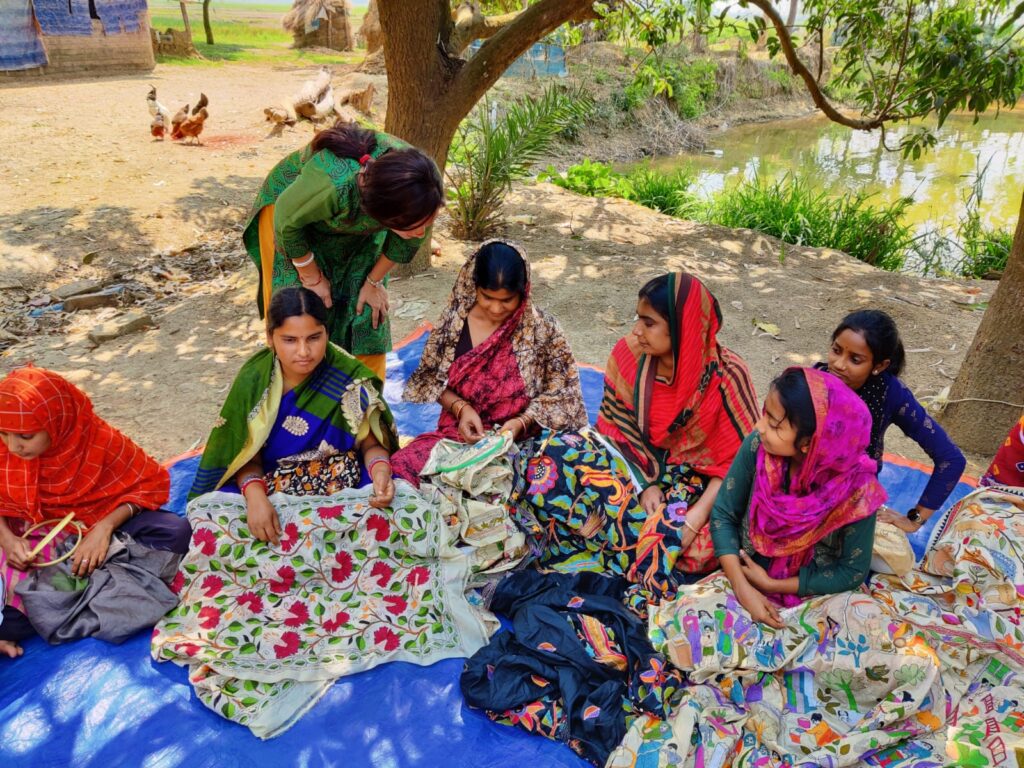Kantha art got new contours and popularity when the Finance Minister, Government of India, Smt Nirmala Sitharaman, paired her blue tussar silk saree with the kantha work while presenting the 2024 interim budget ahead of the elections to the 18th Lok Sabha,
The art from the Birbhum district of West Bengal found its place as a Geographical Indication (GI) tag in 2008 for its unique embroidery style. The popularity of this art revolves around the hands that craft it—the workers who toil hard to create intricate and ordinated art pieces. The Voices talked to artists dwelling on the economy and recognition the art brings them.
Shabnam from Nanoor in Birbhum village, West Bengal, and Hafiz from Pune are the two artists who have been making a living from the art. Sixty-five-year-old Hafiz says that the Kantha embroidery is one of India’s oldest surviving embroidery forms, dating back to 1500 BC. Kanta or qanta refers to both the running stitch and the finished cloth. The rural men and women of Tripura, West Bengal, and Odisha reuse old and worn-out clothes to create marvels like sarees, scarves, kurtas, quilts, pillows, and bags.
He adds that the kantha fabrics originated in the homes of common folks of Bengal and were the simplest form of embroidery. Despite its simplicity, it has a rich and elegant look. Traditionally, kantha was embroidered with a “running stitch pattern” on old layered cloth. They were drawn out of the borders of old sarees, usually depicting some stories of daily life, folk stories, epics, etc. The entire layered cloth was covered with running stitches, which resulted in a slightly wrinkled effect.

The artists and the art
In modern times, those artists have well preserved art, firmly believed in its popularity, and devoted their lives to its creation and propagation. Besides being an artist, Hafiz is also a trainer. What started as a means to earn two square meals daily ended with a passion. Hafiz trains many people today in this art form.

The young artisan, Shabnam, has been a kantha artisan for over 10 years and has created some intricate designs. Talking to The Voices, she shared that her co-workers have become a part of her extended family. It’s not only the earnings. However, working with the threads and needles fostered a sense of security. To meet the high demand, Shabnam works four hours daily on kantha designs and sometimes a few extra hours at home.

Shabnam, a mother to young children, studies and joins the kantha making so that the rich art doesn’t get lost in oblivion. However, Hafiz has a different story to tell. He says that none of his children are interested in earning from kantha due to hard work and lesser returns.

Lockdown Slowed Things Down
As he draws thread at his small shop in Pune, Hafiz works intently, recalling his hardships in the last ten years. With the invention of specialized embroidery machines, work dwindled to nothing. Machine-made Kantha pieces have replaced hand-made pieces. Machine-made Kantha pieces are cheaper and can be made in hours, compared to hand-made pieces that would take days or weeks to finish.
To make matters worse, the lockdown imposed in the country due to COVID-19 brought work to a screeching halt. Workers were left without any work. The younger generation of kantha art bore the brunt of this lockdown, and many left the art completely and opted for other jobs to make ends meet.


The Revival
Many public figures have rejuvenated Kantha’s journey over the years, like Pratima Devi (daughter-in-law of Rabindranath Tagore), designer Tarun Tahiliani, Sabyasachi, and Ritu Kumar. This revival of the cottage industry helped Hafiz and his team to get to work again. It was like a new lease of life. With an emphasis on the Make in India government initiative, the promotion of handicrafts, and sustainability, their work has picked up. Their per-day wage also increased as specialized boutique owners, designers, and design students started hiring them on a project basis. In addition, the newfound interest in this art makes Hafiz hope that people realize the beauty of this art; it is not a trend but a classic that can be passed down for generations.

To keep this tradition alive, many organizations are helping men and women earn a living by selling their artwork in the market. These artisans are spread throughout the country, and modern aspiring designers give these handicraft workers their due.
Copy Editor: Aaryanshi Mohan

